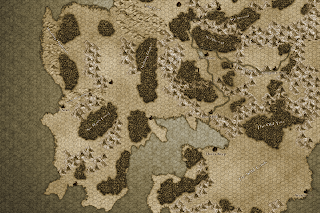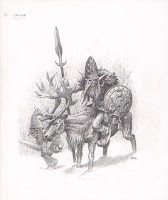Fantasy Map Review - A Teaser for Erce

I've been stalling on finishing my Map Review Series - Given that the last one to review is my own. I am a bit shy and self-conscious about it really, given the body of work I have reviewed prior to it. Anyway, I probably should just accept it will never be finished and get around to sharing it. Until then, here is a teaser to share with players for the Calmir Eastwilds, one of the Borderland regions in Erce and one of the prime campaign areas Here is a snapshot of the whole setting and where the Eastwilds fit in.


